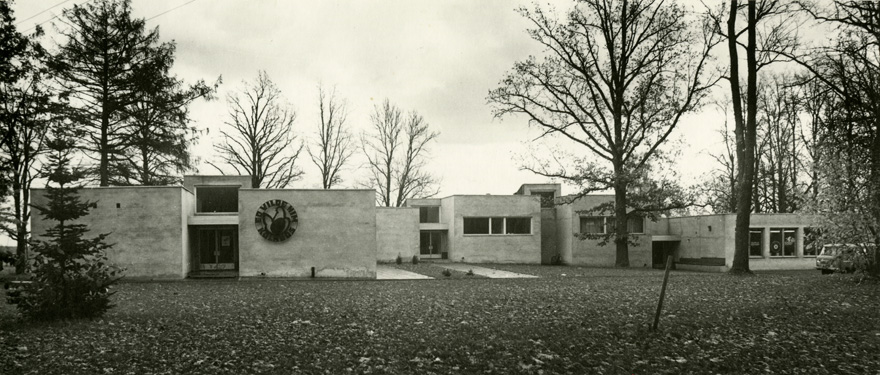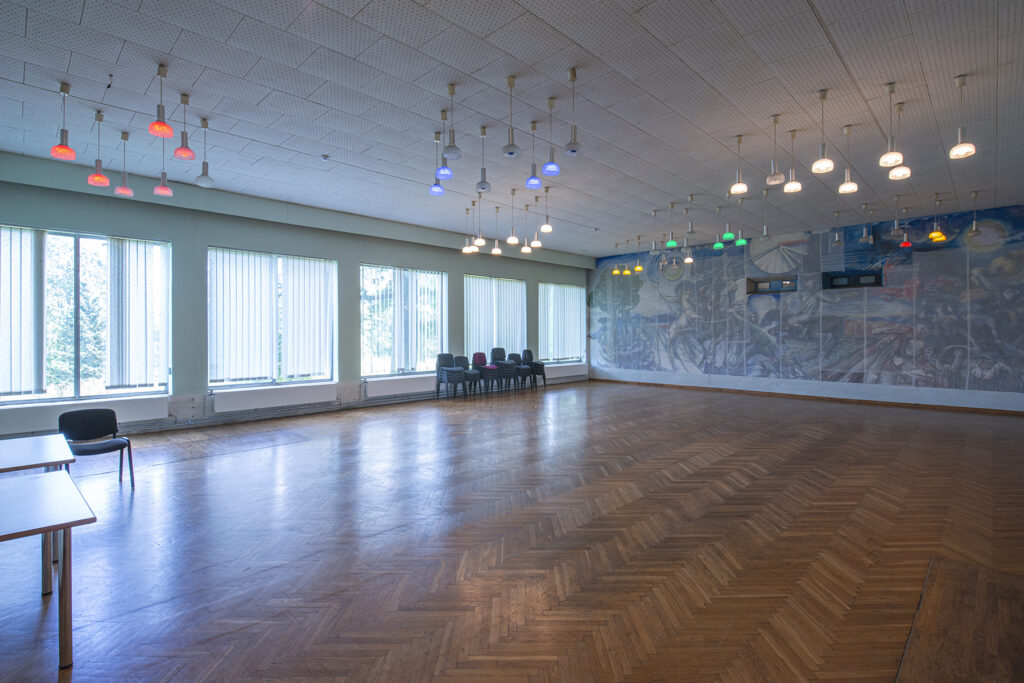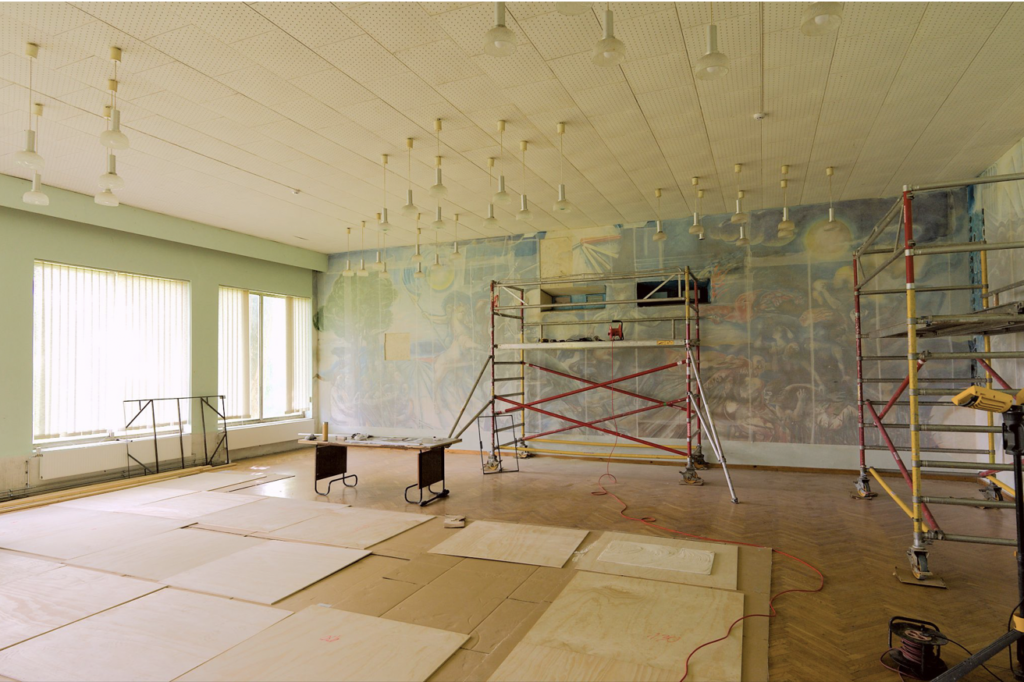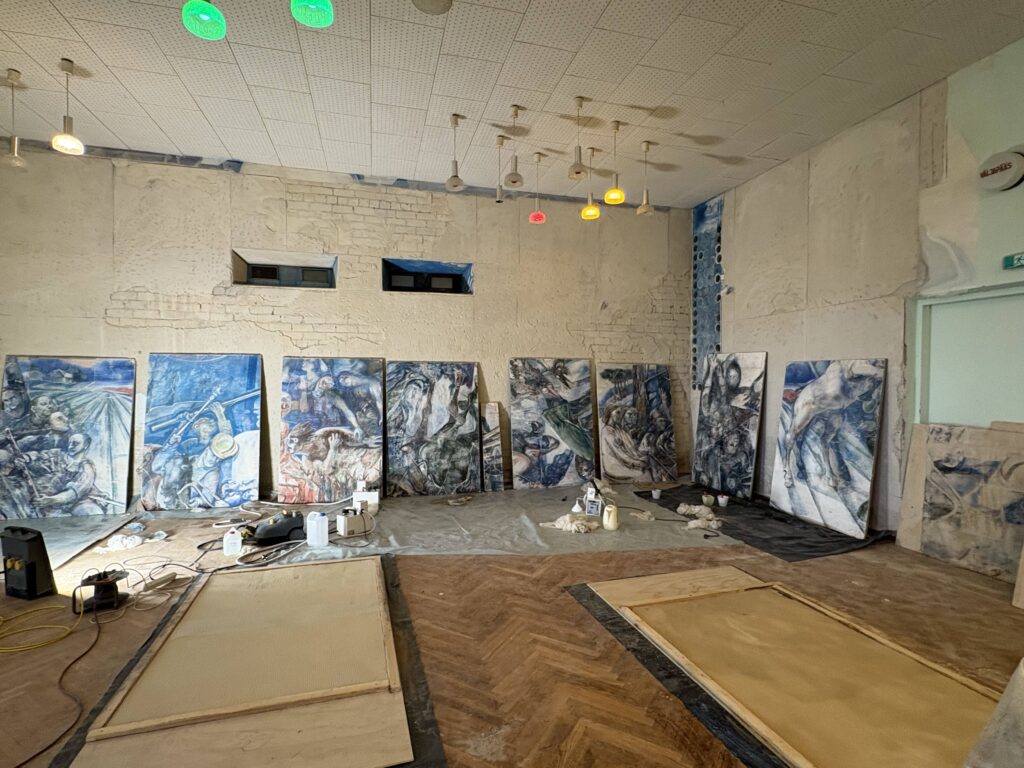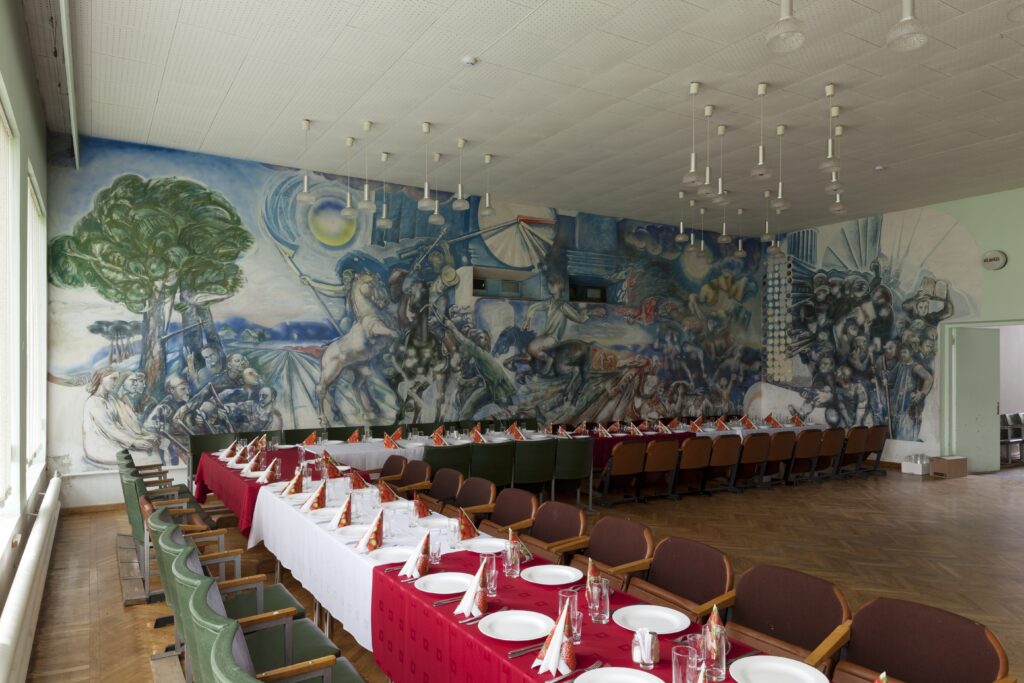
A research project by the Estonian Academy of Arts and Tallinn University explores how to deal with complex heritage while creating new qualities in public space and preserving the important role of controversial heritage as a carrier of history. On of the case studies of the project is the 1984 mural “The Mahtra War” by artist Andrus Kasemaa in Peri village centre, South-East of Estonia.
The interior of the former office and club building of the Eduard Vilde collective farm and the current Peri village centre is made special by the mural “The Mahtra War” by Andrus Kasemaa. Andrus Kasemaa (1941-2016) was a sculptor and graphic artist who headed the Art Cabinet of the University of Tartu from 1974 to 1993. He is best known in Estonian art for his charcoal drawings. This mural, completed in 1984 in the secco technique (tempera paint on dry plaster), is unique in Estonia in both its content and form. In terms of form, this is because, as a rule, monumentalists make a one-to-one sketch of their work before painting it on the wall. Kasemaa’s temperament and approach was different – he sketched his ideas directly on the wall with a brush and then painted over them with paint. While artists have usually strived for a greater degree of generalisation in their monumental paintings, Kasemaa’s work is much denser and more fluid. The style of the painting also corresponds to the subject matter depicted – the clash between Estonian peasants and Russian punitive soldiers in 1858 at Mahtra Manor in Harjumaa, known in history as the Mahtra War. Eduard Vilde’s novel of the same name was published in 1902.
In 2020, a regulation was adopted in Estonia entitled “Conditions and procedure for the use of support for the construction of nearly zero-energy buildings by local authorities”. One of the preconditions for receiving the subsidy is the reduction of inefficient space in the building fund of municipalities, which directs the demolition of buildings that are standing idle or considered energy inefficient. As a result, Soviet-era buildings in particular, which are not protected as monuments, are under threat in Estonia.
This is the fate of the Peri village centre. The building will be demolished to make way for a new near-zero energy building. In this context, the original Andrus Kasemaa mural will also be destroyed. The Reframing Monument project aims to give Kasemaa’s work a posthumous life – the plan is to remove and preserve some details of the almost 50-square-metre work. Selecting these fragments, explaining the rationale behind their selection, and finding new exhibition spaces and future spatial design are all in line with the aims of the Monument’s New Frames research project, which aims to take a balanced look at Soviet-era monumental art.

